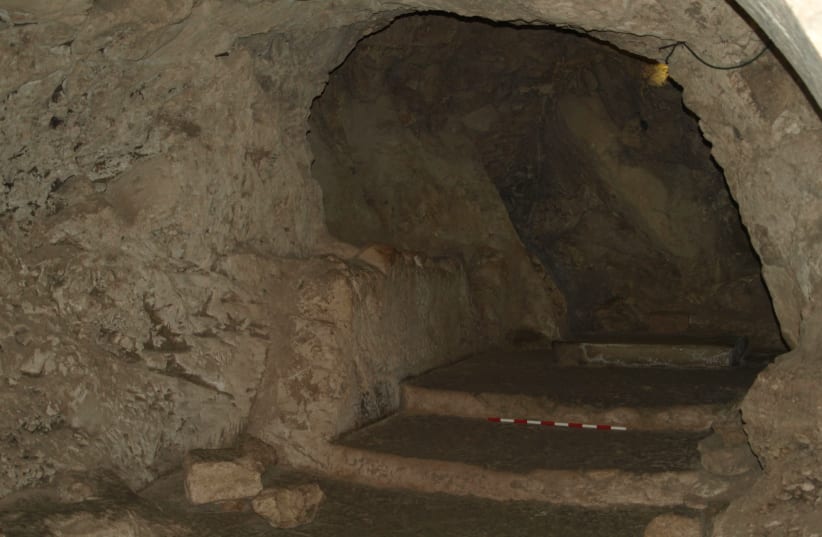“Cave churches have largely been neglected in discussions of development of church architecture around the world,” said Prof. Ken Dark of the University of Reading in England.
“But some may be among the earliest known places of Christian worship.”
It is important for him to emphasize this point to put his research into context, because he recently published a book called The Sisters of Nazareth Convent: A Roman-period, Byzantine, and Crusader site in central Nazareth with
Routledge Press, which made headlines around the world last week as reporters seized on one of his findings to say that he claimed to have found the site of Jesus’ boyhood home.
In his book, he wrote about how Christians in the Byzantine period believed that the dwelling underneath the Sisters of Nazareth Convent had been the home of young Jesus, which led first to the construction of a cave church in the hillside right next to it, before both the house and cave church were incorporated into a big church with a vaulted crypt.
However, what he feels was often overlooked in last week’s media frenzy was that while people in the Byzantine period probably held this belief and while they may even have been correct, it cannot be proved.
One passage in his book sets out his actual conclusion about the house: “It is, therefore, currently impossible to tell whether those who constructed the Phase 3 cave-church [the church built on the site in the fourth century CE] chose the correct location for Jesus’s house, although equally there is no reason to rule out the possibility that they did. What can be said more certainly is that Structure 1 [the first century dwelling] was probably part of the settlement where Jesus was brought up, and that the family of a tekton [craftsman] in first-century Nazareth may well have lived in a house of this form. Structure 1, therefore, has at least a contextual relevance for biblical studies... and beliefs about its identification have probably played an important part in the use of the Sisters of Nazareth site since at least the fourth century.”
Often the world press, he said, seemed to ignore that he said it was “impossible to tell” that this had been Jesus’ home and focus only on the fact that he said, “there is no reason to rule out the possibility.”
He said he hoped that “my book will also focus attention on cave churches and their part in the development of church architecture.”
While there were cave churches wherever early Christians lived in the Roman and Byzantine empires, and beyond in Ethiopia and Europe, the phenomenon of these churches and how they influenced later Christian worship and architecture is just beginning to be studied seriously and in depth, using modern archaeological tools.
There are many new directions this research can take, and Dark said that the Sisters of Nazareth site helped answer some questions about how the caves were used.
But he emphasized that he was looking for archaeological facts and not trying to prove any specific point about the life of Jesus. Dark said he is an “archaeologist of the Roman period and only an accidental biblical archaeologist. I didn’t go to Nazareth to find Jesus’ house, but to understand how the Byzantine Christian pilgrim center there emerged.”
